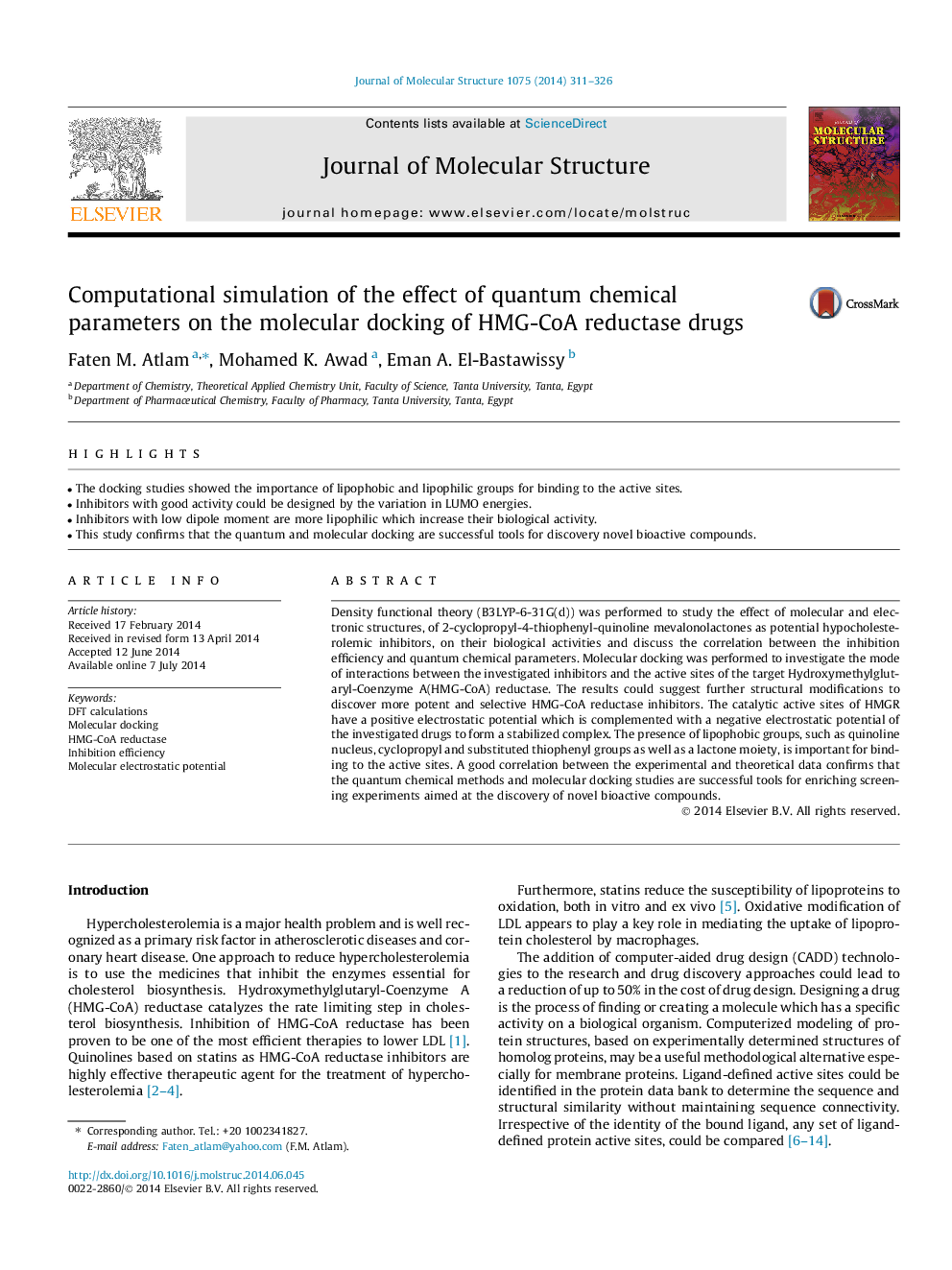| Article ID | Journal | Published Year | Pages | File Type |
|---|---|---|---|---|
| 1402296 | Journal of Molecular Structure | 2014 | 16 Pages |
Abstract
Density functional theory (B3LYP-6-31G(d)) was performed to study the effect of molecular and electronic structures, of 2-cyclopropyl-4-thiophenyl-quinoline mevalonolactones as potential hypocholesterolemic inhibitors, on their biological activities and discuss the correlation between the inhibition efficiency and quantum chemical parameters. Molecular docking was performed to investigate the mode of interactions between the investigated inhibitors and the active sites of the target Hydroxymethylglutaryl-Coenzyme A(HMG-CoA) reductase. The results could suggest further structural modifications to discover more potent and selective HMG-CoA reductase inhibitors. The catalytic active sites of HMGR have a positive electrostatic potential which is complemented with a negative electrostatic potential of the investigated drugs to form a stabilized complex. The presence of lipophobic groups, such as quinoline nucleus, cyclopropyl and substituted thiophenyl groups as well as a lactone moiety, is important for binding to the active sites. A good correlation between the experimental and theoretical data confirms that the quantum chemical methods and molecular docking studies are successful tools for enriching screening experiments aimed at the discovery of novel bioactive compounds.
Keywords
Related Topics
Physical Sciences and Engineering
Chemistry
Organic Chemistry
Authors
Faten M. Atlam, Mohamed K. Awad, Eman A. El-Bastawissy,
